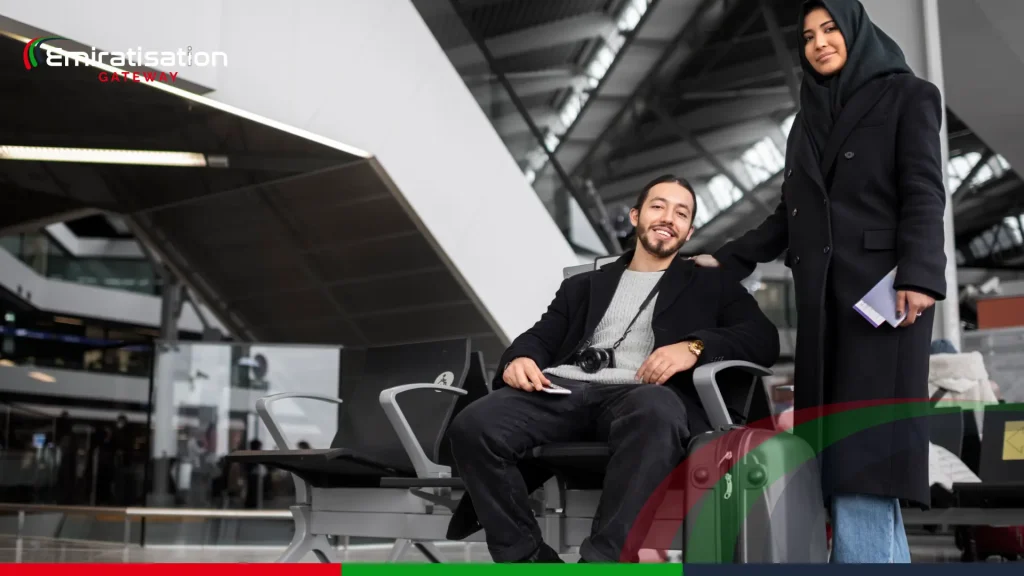Emiratisation affects hundreds of businesses in the UAE. It shapes hiring practices. It also defines penalties and strategies. This guide breaks it all down. You’ll learn what Emiratisation means, the goals behind it, compliance rules, smart strategies to meet targets, and what lies ahead. Let’s get started and understand the Emiratisation regulations in the UAE in detail.
What is Emiratisation and Why is it Important in the UAE?
Emiratisation refers to the UAE Emiratisation policy that pushes companies to hire UAE nationals. It grew from 2000’s early reforms. Today, it drives workforce nationalisation in both the public and private sectors. It aims to diversify the economy. It creates meaningful jobs for Emiratis in skilled roles. It also reduces reliance on foreign labour. Most importantly, it aligns with national goals and MoHRE directives.
This effort boosts national identity at work. It strengthens economic resilience. It helps grow a balanced, competitive talent pool. These guidelines now affect small and large firms alike.
Key Concepts of Emiratisation Regulations in UAE
Before moving forward, first understand the concepts of Emirtaistaion rules. Companies must meet specific percentages and numbers of Emiratis. It is based on size and sector. Some targeted sectors that need to fully meet Emiratisation. The rules apply to 14 key industries. Including finance, healthcare, education, real estate, manufacturing, and more.
Quotas rise annually, as per the mandated target of the UAE government. Small firms hire more locals. Similarly, large firms must grow Emiratisation by 2% annually. MoHRE audits compliance closely. They are assigned to take a closer look at fake Emiratisation and enforce fines.
Overview of Emiratisation Regulations in the UAE
UAE Emiratisation is all about getting more nationals into emiratisation private sector jobs. The government sets yearly hiring targets for companies. These are primarily based on their size and industry. It’s now a key part of running a business legally and responsibly in the country.
Key Objectives of Emiratisation in the UAE
There are several objectives of meeting Emiratisation targets. The programs help boost local employment in private sector roles. Helping companies to achieve a cumulative 10% Emiratisation rate by 2026. The policy promotes inclusive, sustainable economic growth. Providing a greater chance to encourage national talent development and leadership roles.
Targeted Sectors for Emiratisation
MoHRE enforces quotas across 14 strategic sectors. We’ve compiled a list of these sectors in detail. Let’s move forward to know what those sectors are:
- Information & communications
- Financial & insurance
- Real estate
- Education
- Healthcare & social work
- Manufacturing & construction
- Wholesale & retail trade
- Transportation & warehousing
- Administrative & support services
- Arts & entertainment
- Mining & quarrying
- Hospitality services
- Professional, scientific & technical services
This scope ensures Emiratisation impacts core economic activities.
Compliance Requirements for Businesses
Businesses like yours must know the Emiratisation requirements to comply with the UAE government-imposed rules under the Emiratisation program.
Mandatory Emiratisation Quotas for Companies
The Emiratisation quotas based on company size are formatted in the form of a table for your better understanding.
| Company Size | Emiratisation Requirement (2025) |
| 20–49 employees (targeted sectors) | Hire at least 2 Emiratis by 2025 |
| 50–99 skilled workers | At least 1 Emirati, increasing by 2% annually |
| 100–149 | At least 2 Emiratis, rising with staff growth |
| 150+ skilled workers | 1 Emirati per 50 skilled employees |
Large firms must boost Emiratisation by 2% each year, aiming for 10% by 2026. Smaller firms in targeted sectors must have two Emiratis by the end of 2025.
Penalties for Non-Compliance with Emiratisation Laws
Severe fines and penalties will be imposed on you if you fail to meet Eimiartisation rules. The following are the highlights of the fines:
- SMEs (20–49 employees): AED 108,000 annual fine per unmet Emirati post in 2025.
- Large firms: AED 7,000 per month per unfilled skilled role until hire, AED 84,000 per year. This number rises yearly.
- Repeated violations: Fines escalate up to AED 500,000. Authorities may suspend visa quotas, block contracts, and downgrade company status.
- Fake Emiratisation: AED 20,000–100,000 per fraudulent case; up to AED 1 million for severe or repeated offences.
Emiratisation compliance audits intensify from mid‑2025. MoHRE now forbids token hires and ensures Emiratis get real roles.
Strategies to Meet Emiratisation Requirements
Meeting Emiratisation requirements isn’t that difficult. All you need to do is to tick all the checklists. We’ve described it into two parts so that you can better understand how to align your business goals with Emiratisation targets.
Hiring Emirati Nationals: Best Practices
Below are some of the best practices that you need to adopt to make the best choices.
- Plan ahead: Recruit early in the fiscal year to avoid last-minute hires.
- Support training: Enroll Emiratis in up‑skilling programmes via Nafis and others.
- Offer real roles: Ensure Emiratis hold meaningful, skilled positions, not symbolic ones.
- Ensure fair pay: Minimum salary AED 4,000/month; also provide benefits like health insurance, housing, and pension.
- Use digital tools: Leverage the Nafis platform, job fairs, Bayt, and LinkedIn to reach local talent.
Collaboration with Emiratisation Programs and Initiatives
Join Nafis by registering on approved platforms for subsidies and training support. Partnering with training bodies is a good idea. Work with Tanmia or other MoHRE‑backed schemes. Sponsor internships and mentorships by engaging new Emiratis in real projects and development paths. These collaborations build trust and show a genuine commitment to national hiring goals.
Future Trends in Emiratisation Policies
Sector quotas keep on rising. For instance, insurance may require up to 50–60% Emirati staff by 2030. It is announced to have tougher enforcement from July 2025. This includes more audits, public blacklists, restrictions on work permits, and government contracts for non-compliant firms.
Digital services expansion is planned. According to which, 18 new MoHRE digital tools simplify compliance reporting and recruitment. Tier-based incentive system is also in the pipeline. High-performing companies may qualify for lower fees and exclusive access to projects.
Conclusion
Emiratisation regulations in the UAE now carry real consequences. They shape strategic planning and force businesses to rethink hiring and development. The rules affect all sizes, whether it is SMEs to multinational firms, and cover 14 key sectors. MoHRE enforces quotas strictly, and penalties now go beyond fines to licence and permit restrictions.
Staying ahead means planning Emiratisation as a core part of your HR strategy. Hire early, train well, and use Nafis. Ensure roles are meaningful. You should track compliance and stay updated on policy changes.
Doing this leads to complying with Emiratisation guidelines. You can boost UAE national participation and protect their operations. It also aligns with broader national goals by building a sustainable and skilled Emirati workforce.
If you need help calculating your quota or drafting an Emiratisation strategy? Emiratisation Gateway would be glad to assist. We have years of experience in guiding companies to comply with Emiratisation rules. This way, they skip fines and penalties. Add your name on the list of those who meet the Emiratisation program effectively.
FAQs
Q1. Which companies must comply?
Mainland companies with 50+ employees, and certain sectors with 20–49 employees.
Q2. What are the hiring requirements?
2% annual increase for 50+ companies; 1 Emirati in 2024 and 2 in 2025 for mid-sized firms.
Q3. What happens if companies fail to comply?
Fines up to AED 6,000/month per missing hire or lump-sum penalties for smaller firms.
Q4. Are there incentives for compliance?
Yes—reduced permit fees, government support, and NAFIS benefits.





